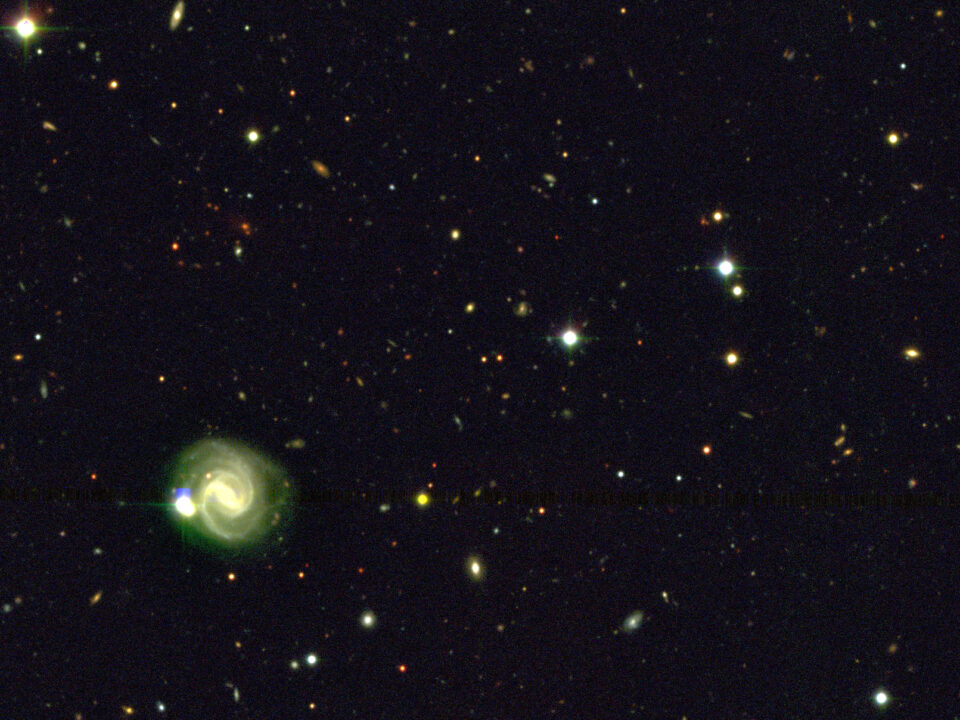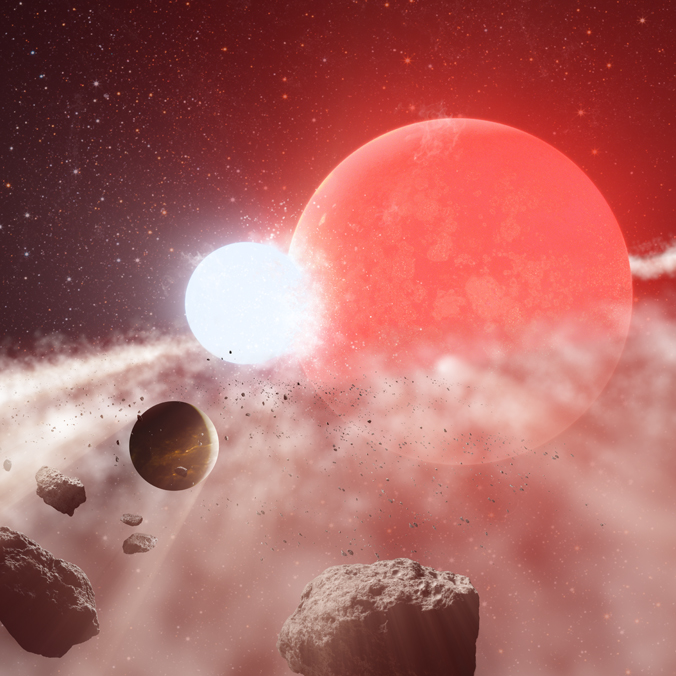Extrasolar Planets Discovery

While Seeking Planet X, Astronomers Find a Distant Solar System Object
October 2, 2018
Two Maunakea Telescopes Play Critical Role in Producing World’s First Image of a Black Hole
April 10, 2019The hunt for exoplanets (planets outside of our Solar System) is a hot topic in Astronomy and the Maunakea Observatories certainly impacted history with their early contribution. In 2007, Astronomers using the Gemini North telescope and W. M. Keck Observatory obtained the first ever direct images of a family of planets around an “alien” star.
The international team led by Christian Marois of the National Research Council of Canada’s Herzberg Institute of Astrophysics and team members from the United States and United Kingdom used Gemini images to make the initial discovery of two planets in a confirmed planetary system with data obtained on October 17, 2007. On October 25, 2007, and in the summer of 2008, the team further confirmed that discovery and found a third planet orbiting even closer to the host star with images obtained at the Keck II telescope.
The host star of this historic image is a young, massive star called HR 8799, located at about 130 light years away from Earth. HR 8799 has about 1.5 times the mass of the Sun and is 5 times brighter, but is significantly younger. Observations of infrared light by satellites have shown evidence for a massive disk of cold dust orbiting the star, which stands out as one of the most massive in orbit around any star within 300 light years of Earth. HR 8799 is faintly visible to the naked eye, but only to those who live well away from bright city lights or have a small telescope or even binoculars.
The planets are young enough that they are still glowing from heat released as they contracted and formed about sixty million years ago. Analysis of the brightness and colors of the bodies shows that they are between seven and ten times the mass of Jupiter. As in our solar system, these giant planets orbit or circle their host star at roughly 25, 40, and 70 times the Earth-Sun separation. The furthest planet orbits just inside a disk of dusty debris, similar to that produced by the comets of the Kuiper Belt objects of our solar system (just beyond the orbit of Neptune at 30 times the Earth-Sun distance). In some ways, this planetary system seems to be a scaled-up version of our solar system orbiting a larger and brighter star.
At both the Gemini North and Keck II telescopes, adaptive optics technology was used to correct for blurring due to atmospheric turbulence. Adaptive optics allow large ground-based telescopes to match or exceed the performance of the Hubble Space Telescope. In addition, the detections of all three planets were made possible by an advanced observing strategy that helps to separate the faint planet’s light from the light of the host star.
More than 200 exoplanets had been detected in the decade prior to this observation, but almost all were known only through indirect studies of their gravitational pull on their parent star. By imaging the planet directly, we can study its properties in detail – measure its temperature and composition and try to understand its atmospheric structure.
At the time of this discovery, astronomers were working to obtain images and spectroscopic (splitting light into its rainbow of colors) studies of gas giant planets, but to image and get spectra of truly Earth-like planets requires specialized space telescopes that are still on the drawing board. The discovery of the HR 8799 system was a crucial step on the road to the ultimate detection of another Earth and the Maunakea observatories continue to advance technologies in support of the discovery and study of exoplanets.



